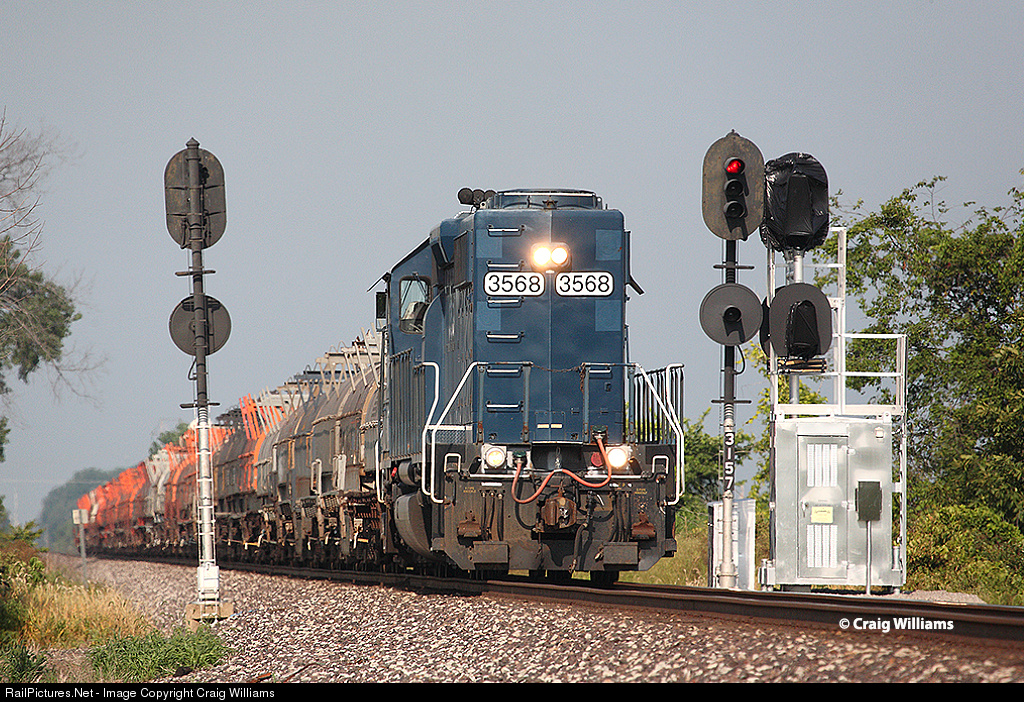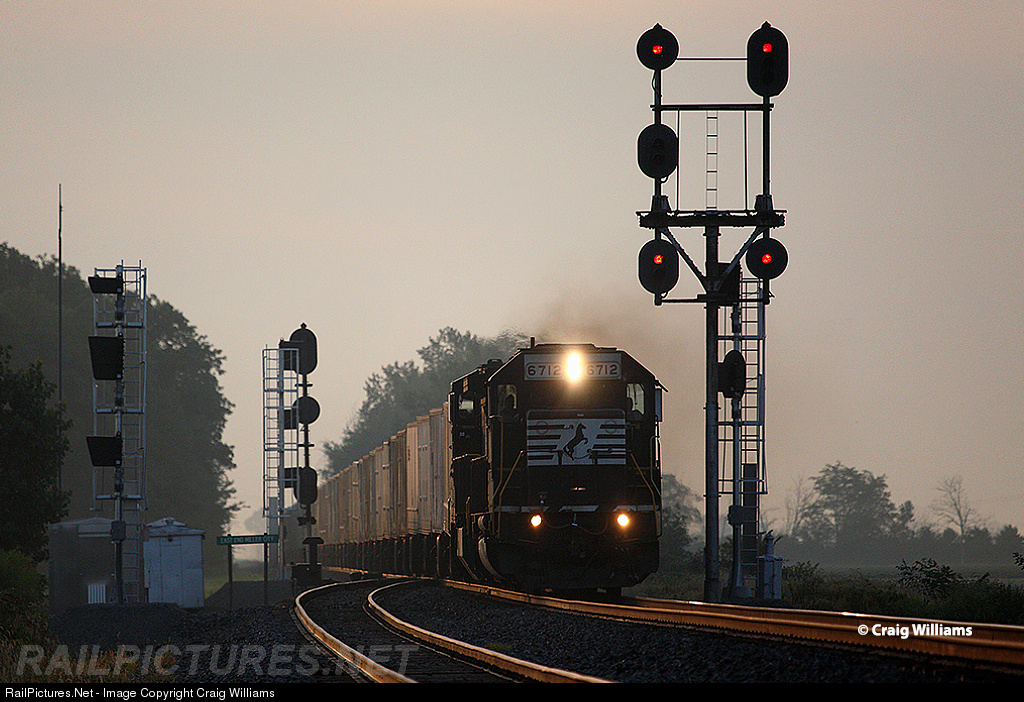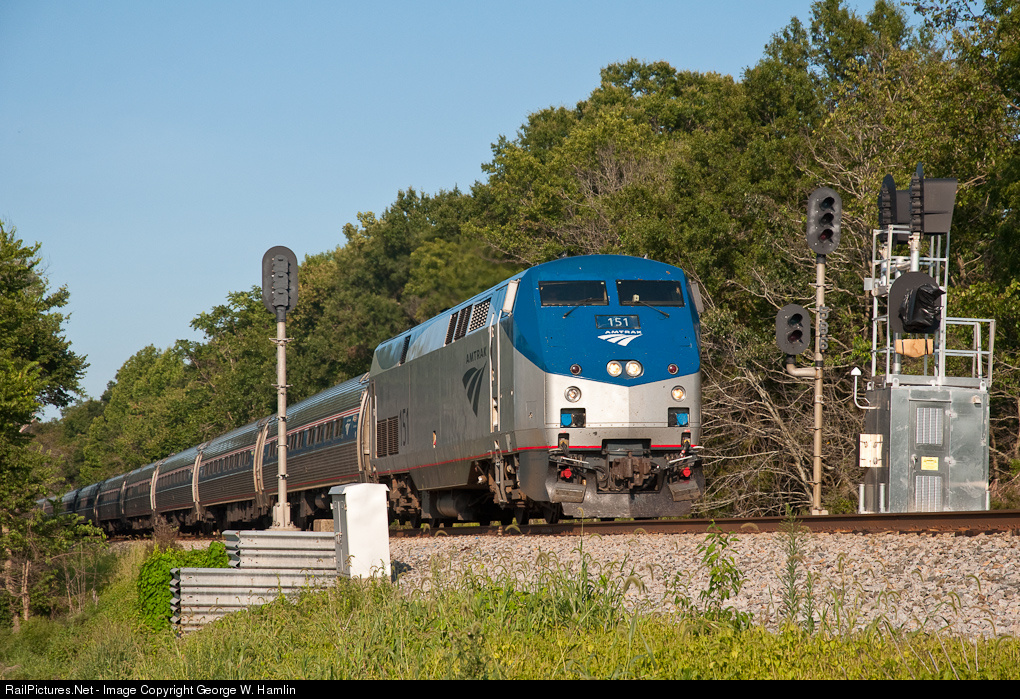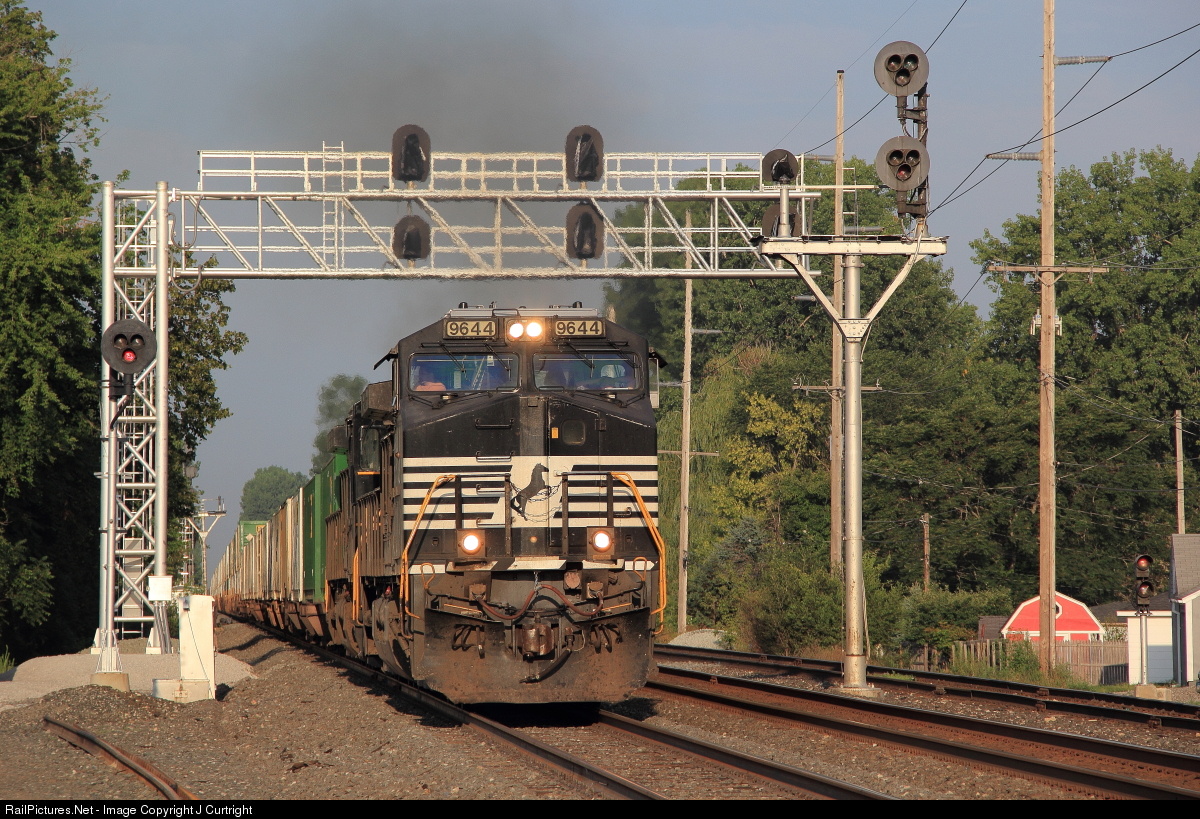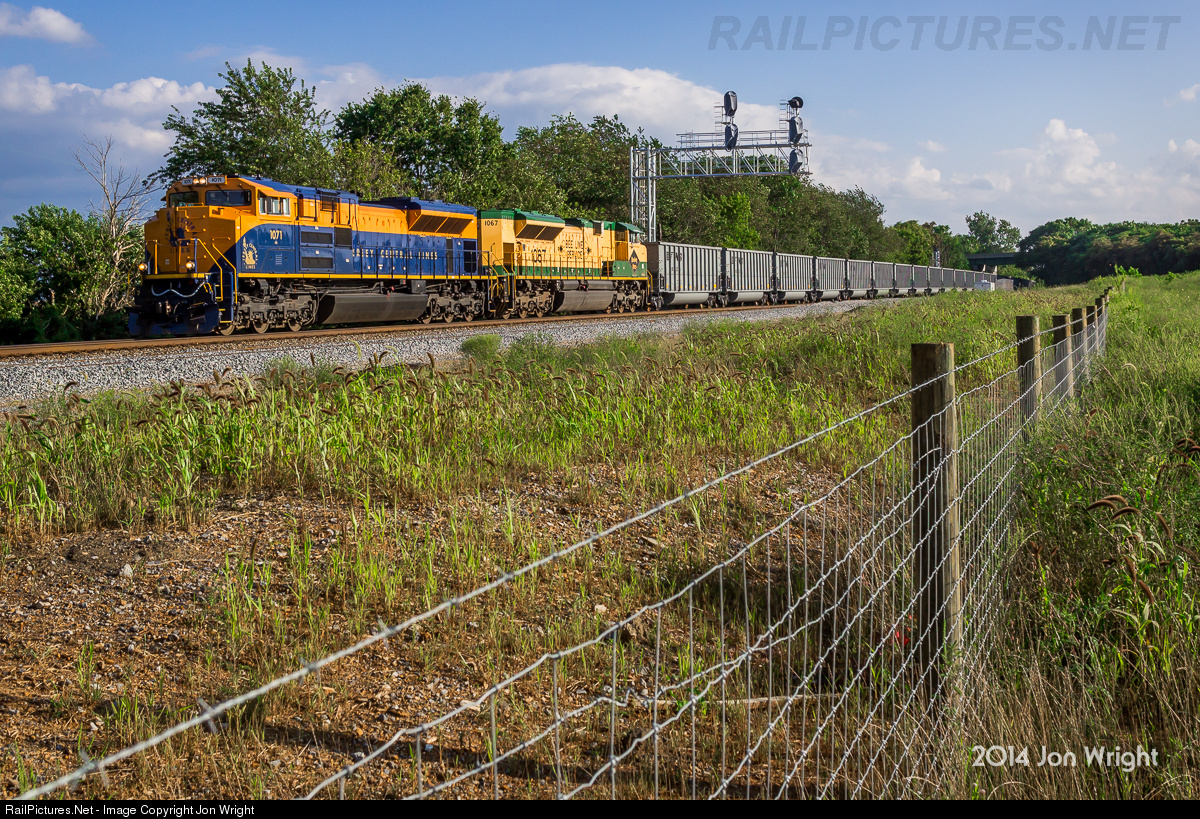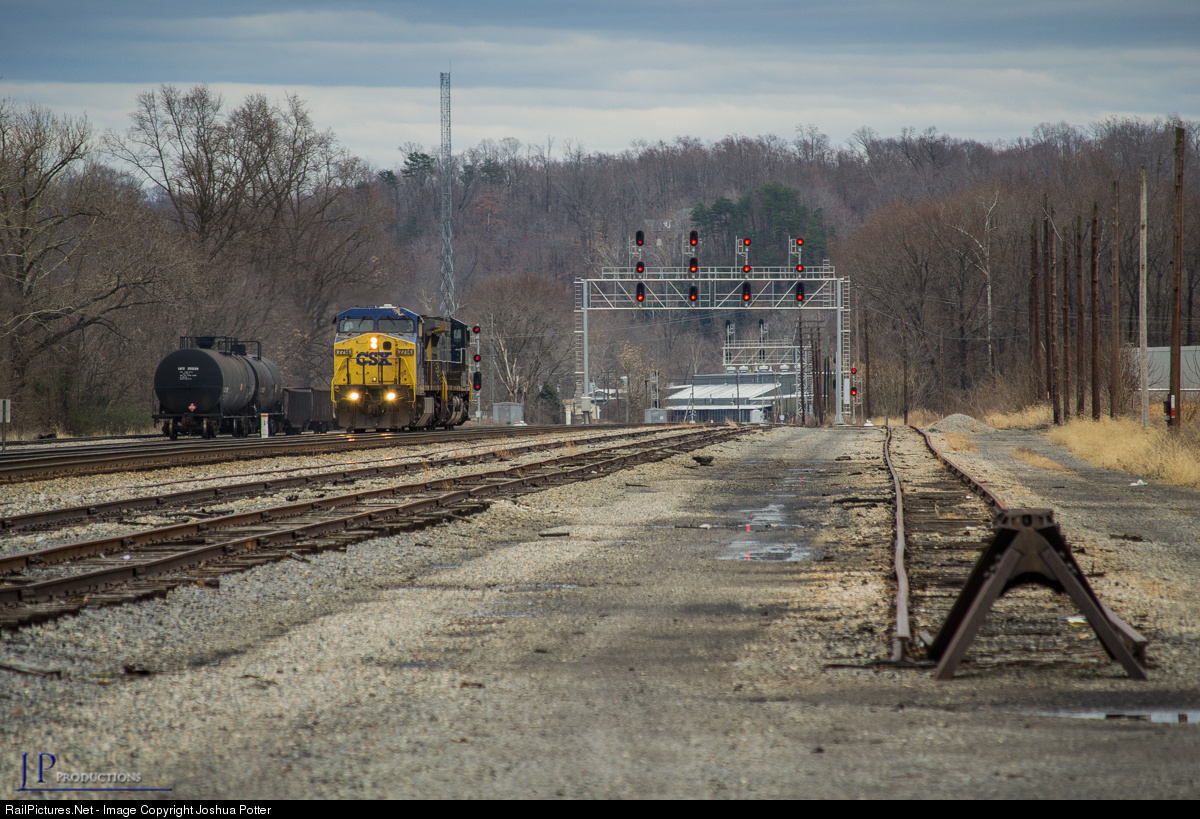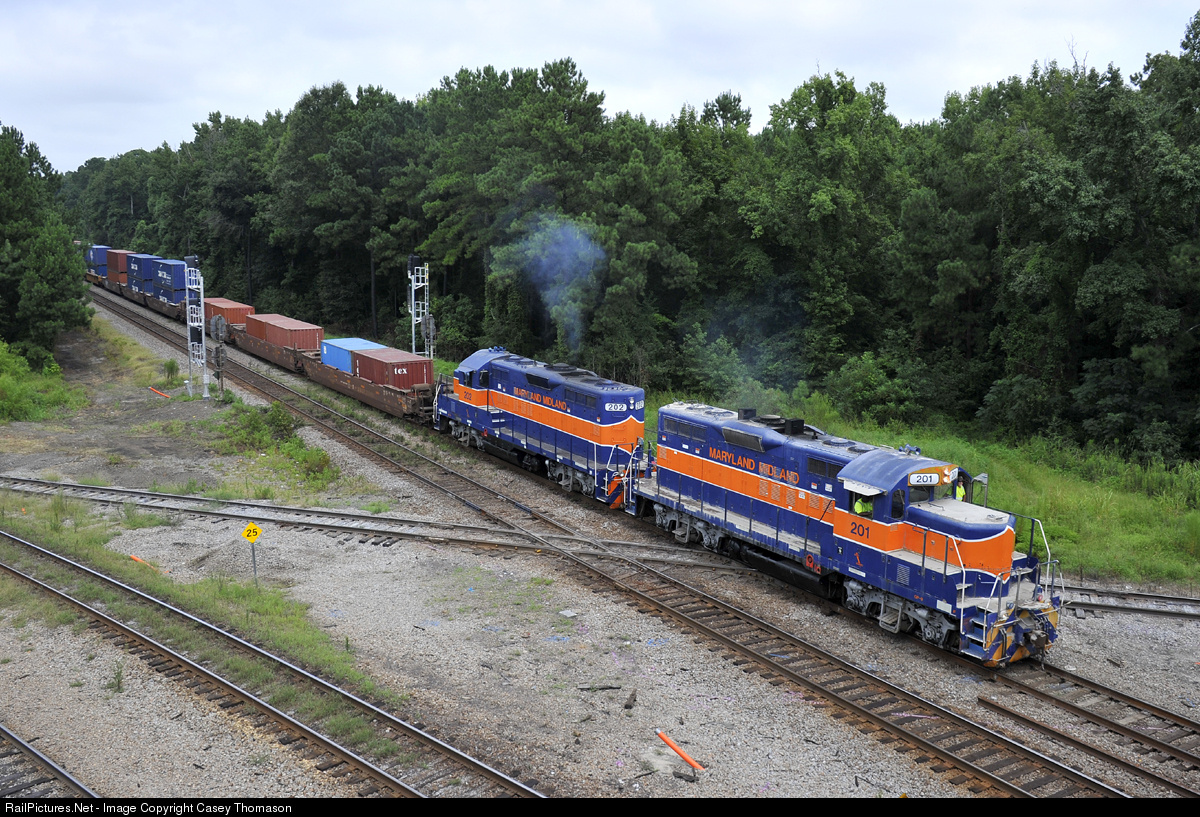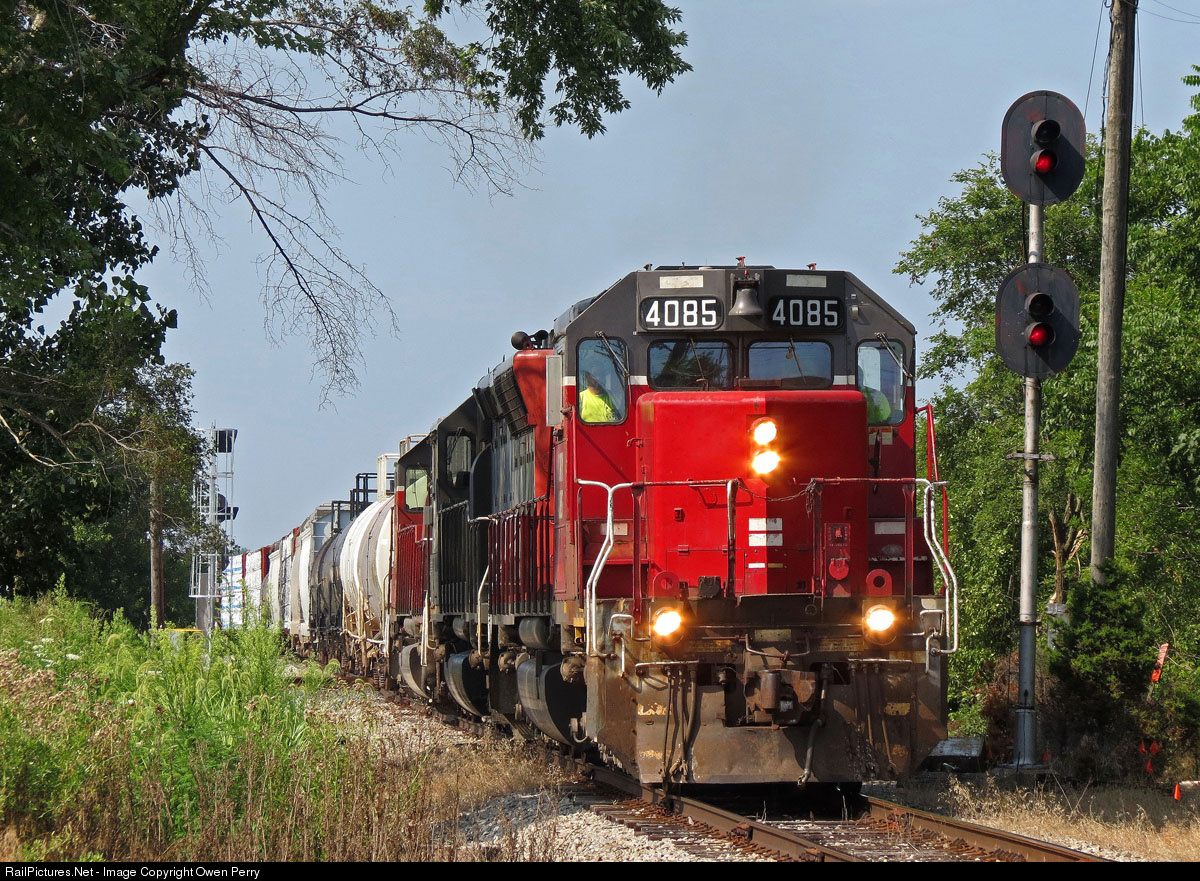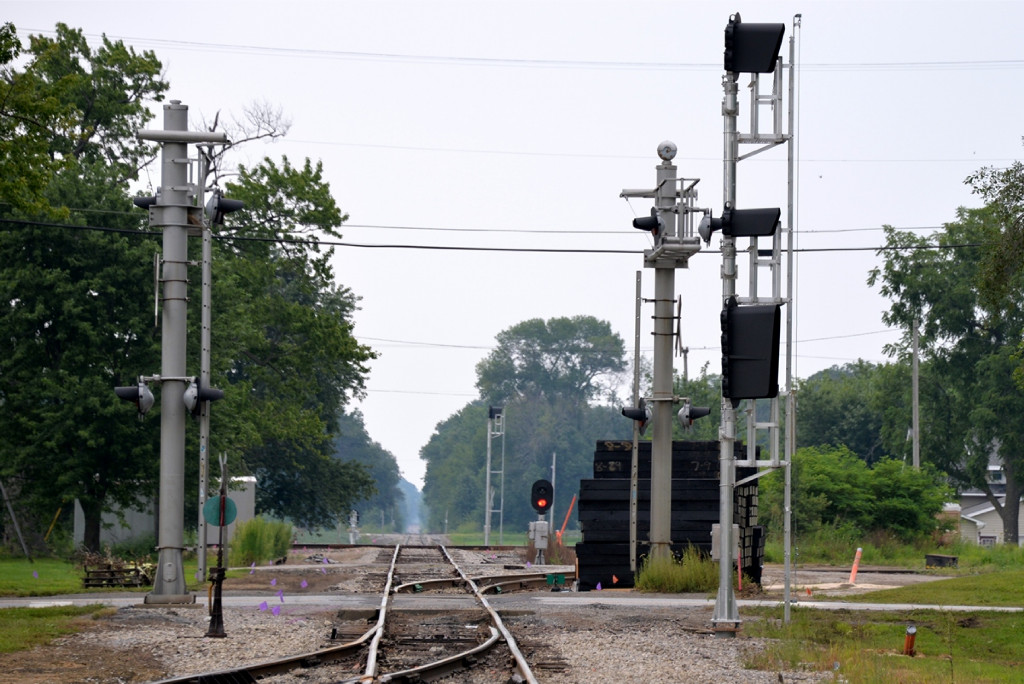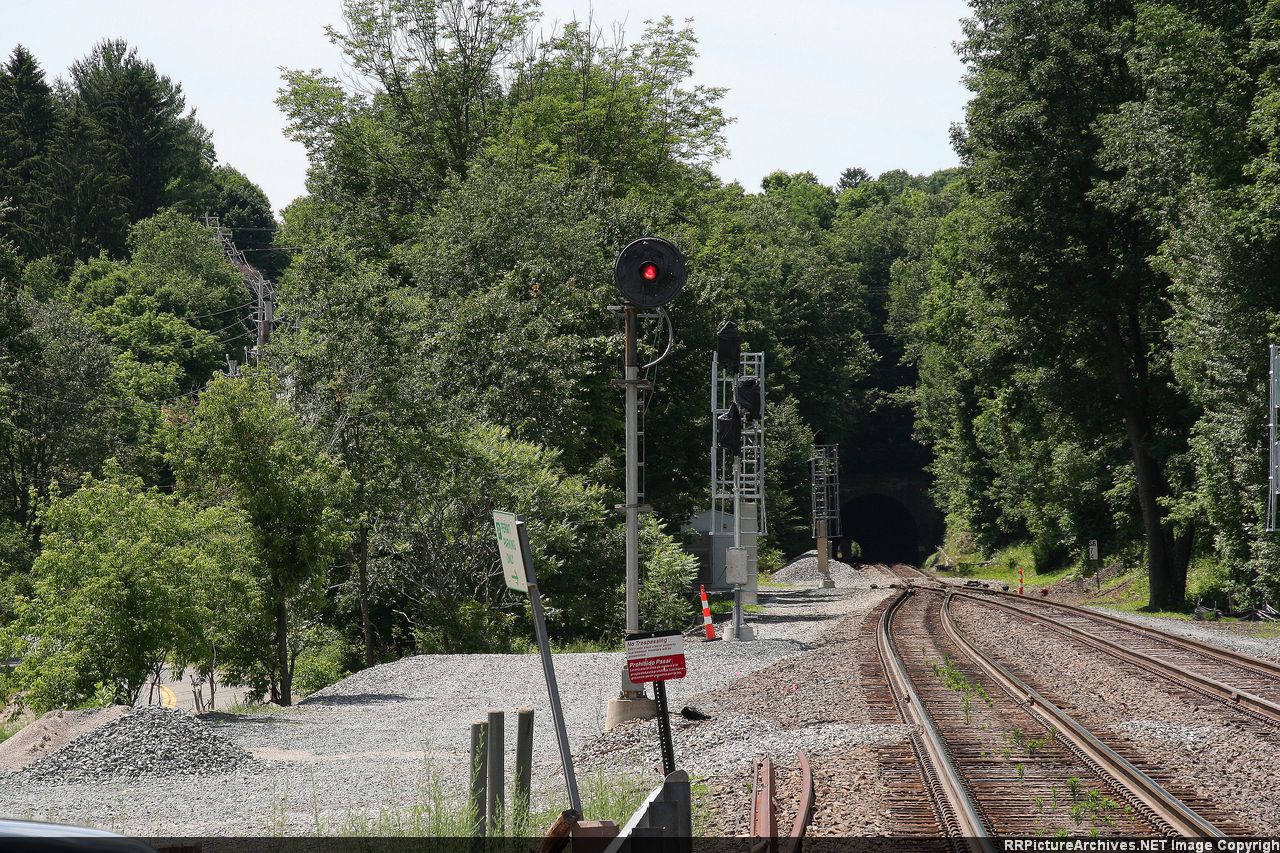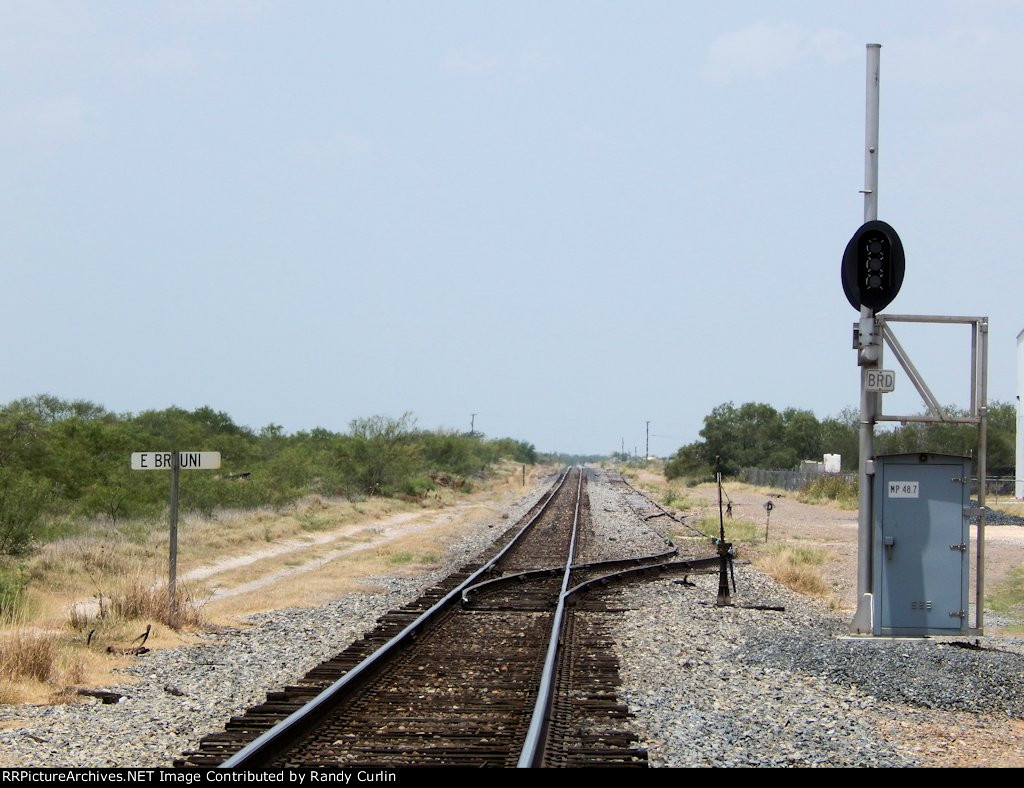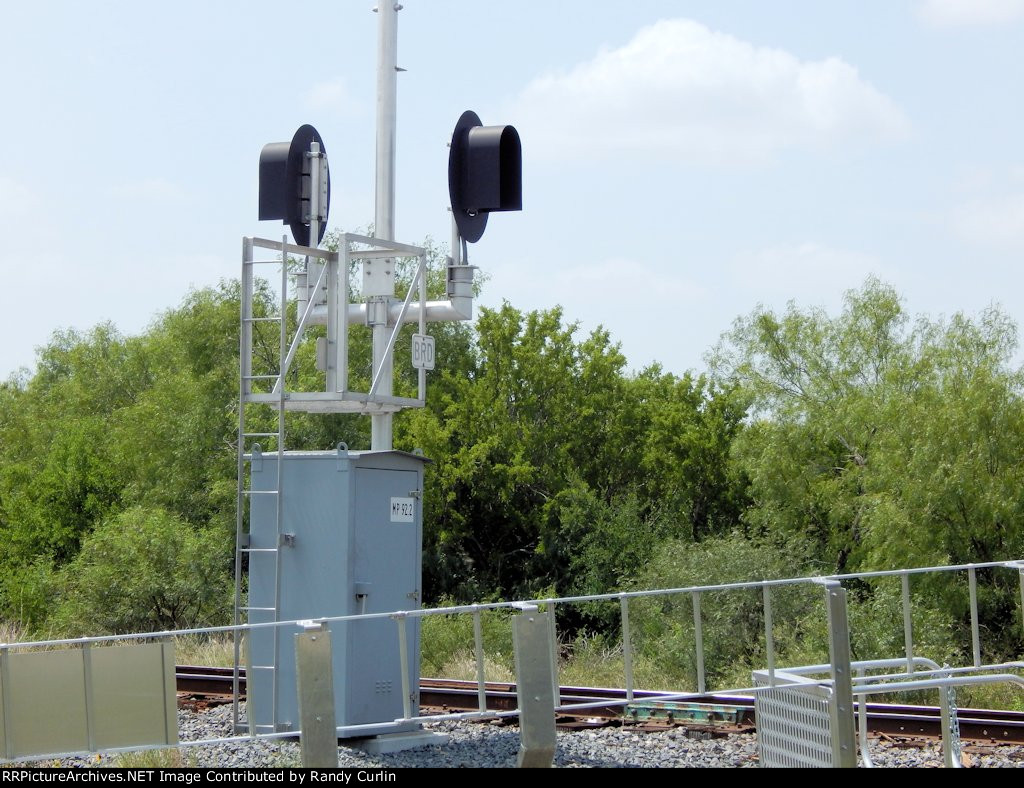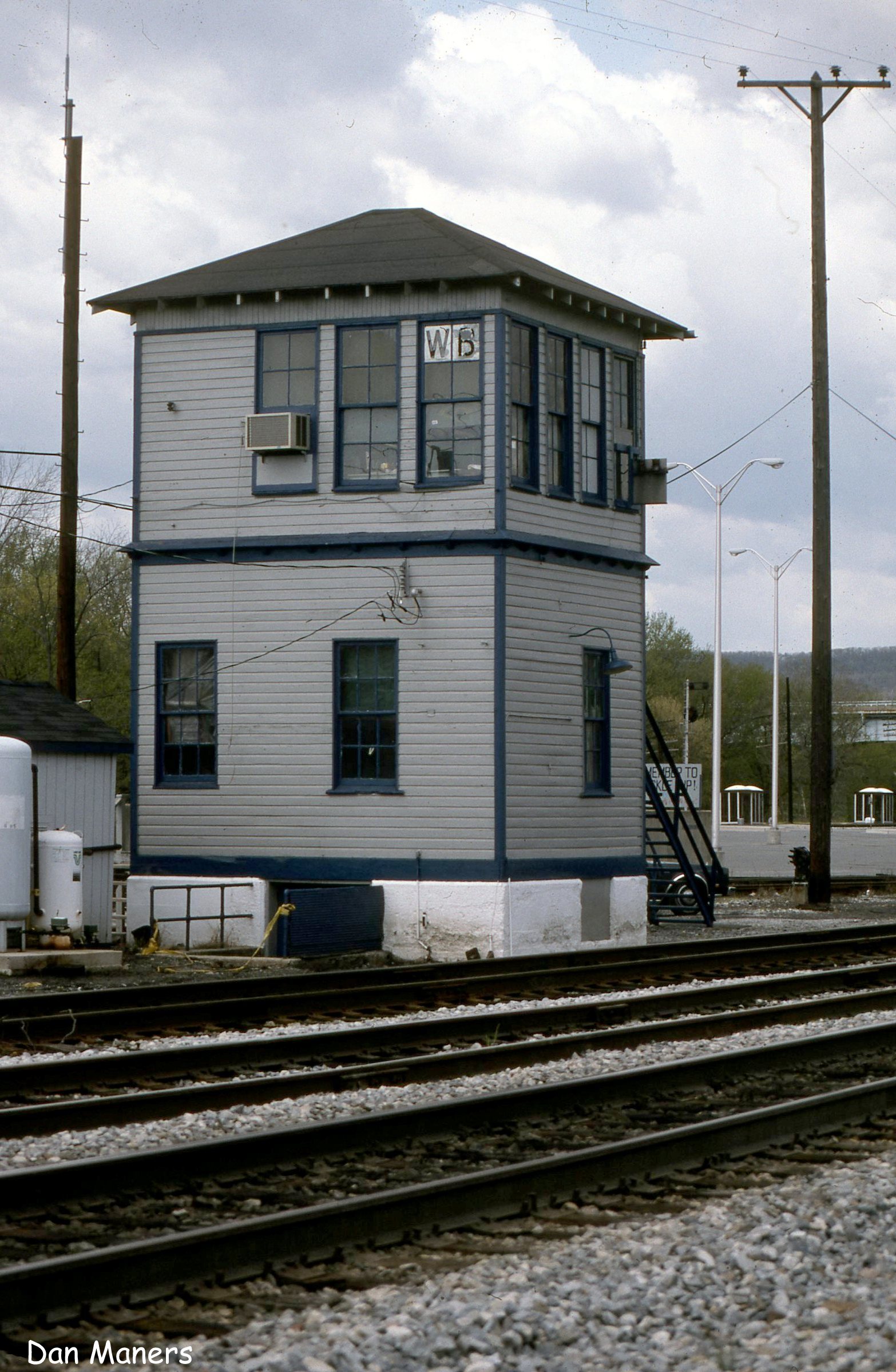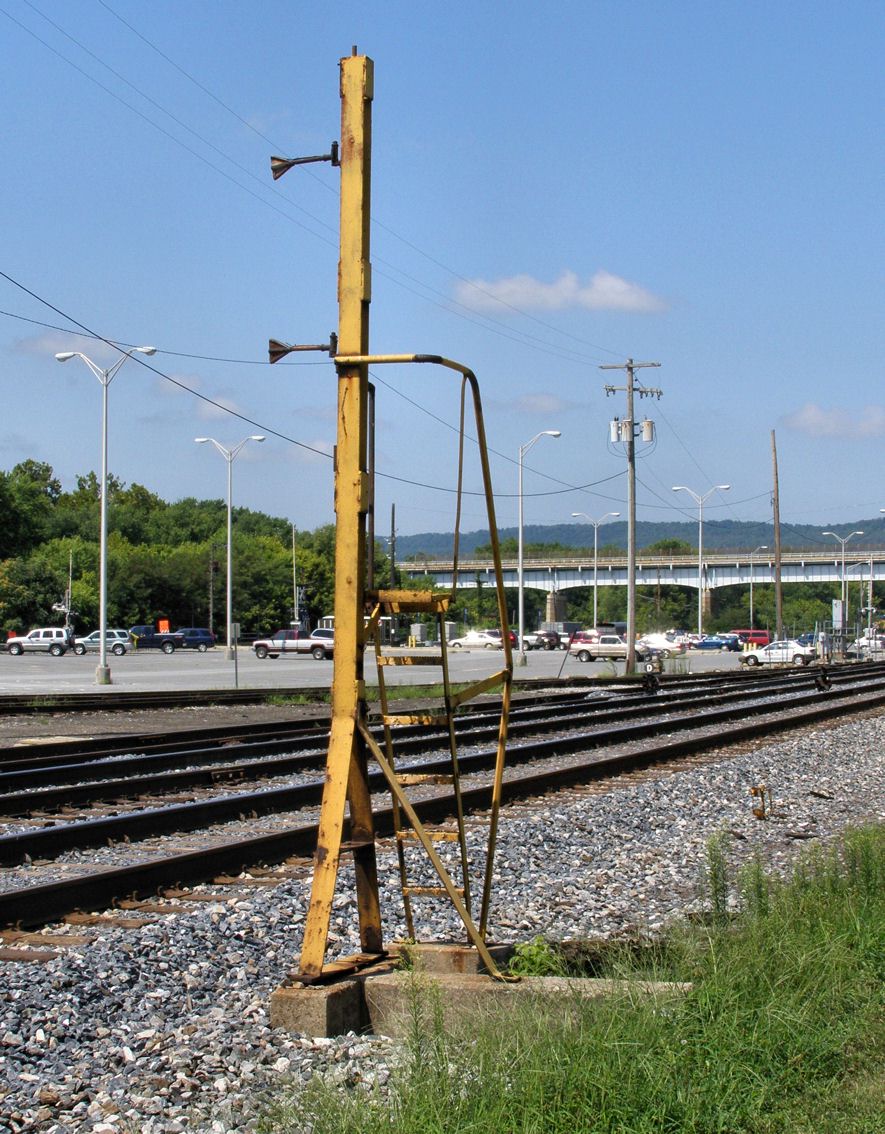Well I have just completed two Amtrak trips on both coasts and I have a few news items from both as well as the standard fare I have gleaned from various photos and whatnot. Most of the big news seems to be coming from NS which is busy re-signaling its former Nickle Plate main out in Ohio. Ugh, those combo-boxes just ooze cheapness.
It's worth noting that at interlockings the signals will be seeing a few additional lamps including a Restricting indication and a Red light on each head.
On the Southern main line NS has deposited new signaling equipment all the way up into VA indicating that no part of the line will be spared :-(, even where one Safetran clamshell will replace another. Eliminating the right hand requirement was probably one of the worse FRA rule changes that could have happened to signals.
More Chicago Line re-signaling as seen here at CP 307. Again, at least NS takes Restricting seriously.
On the N&W H Line in Virginia NS is extending the southern end of the siding between Shenandoah Jct and Daniels by constructing a "new" Daniels interlocking. I think the old one already used color light signals however.
On to CSX the former C&O main re-signaling project is progressing. Here is the new signal gantry in service at Kenova.
New signals going up on the SCL line near Savanna.
Not even the signals facing shortlines are safe as can be seen on the I&O crossing at Leipsic, OH.
And the TPW crossing in Reynolds, IN.
Over on the East Coast the new color light signals in the F Interlocking complex near Sunnyside Yard have been completely cut over, ruining one of the better concentrations of all amber PL signaling. The nearby HAROLD interlocking is likely to be next. This is all due to the East Side Access project, which is wasting billions of dollars so that LIRR riders don't have to walk a few blocks after arriving at Penn Station.
Finally on the BNSF Coast Starlight Route the remaining bits of classic signaling between Tacoma and Portland are slated for removal, while on the UP side of things nearly all the SP and NP searchlights have already been removed. The exception are a number of searchlit interlockings on the mountain pass between Paso Robles and San Luis Obispo and any former SP style color light signals that were already in place. All these appear to be safe for some time as the PTC antennas are in place. Likewise a few searchlight interlockings north of Salinis similarly appear to be safe. The long segments of TWC-ABS operation on the Coast and Santa Barbara Subs have also been left alone, although all signaling is now LED Darth Vaders. If you like manual passing maneuvers and TWC action on your scanner I guess that is still a step above full on CTC. The latter part can be viewed via a day trip on Amtrak's Pacific Surfliner to San Luis Obispo.
A blog devoted to explaining the ins and outs of North American railroad signaling, past, present and future. This blog seeks to preserve through photo documentation the great diversity and technical ingenuity of 20th century signaling and interlocking hardware and technology. Related topics cover interlocking towers and railroad communications infrastructure.
Note, due to a web hosting failure some of the photos and links may be unavailable.
Search This Blog
Sunday, August 31, 2014
Saturday, August 16, 2014
Metro North Resignaling Project Progress
The Port Jervis Line has been the bastard stepchild of the Metro-North Commuter Railroad since it was formed in 1983. Formerly part of the Erie railroad, the PJL terminated in Jersey City and was therefore a rather imposing river removed from the rest of the MNRR operations into Grand Central. In fact, unlike the East of Hudson services which all operated on tracks owned by the State of NY, at first under contract as Penn Central/Conrail's "Metropolitan Division" and later under the MTA owned Metro North, the PJL's track was owned by Erie successor Conrail (and later Norfolk Southern) as its Southern Tier Line, with the actual passenger service being operated a New Jersey Transit.
While through the 1990's the Southern Tier saw significant traffic as Conrail's only doublestack cleared line out of the New York region, once other routes opened up traffic fell off dramatically with all through traffic ending at the beginning of the Norfolk Southern era. This left NS to maintain a line it really didn't want which is one of the conditions that leads to preserved signaling. Around 2005 NS finally sold the line to MNRR which promised to improve service on the line as a way to keep Rockland and Orange counties paying taxes to the MTA. Of course nothing came of these promises until about 2010 when $300 was allocated for track and signal improvements. Then Hurricane Sandy hit and caused numerous washouts which of course delayed the planned improvements even further.
Anyway, it is now 2014 and for good or for ill the long planned signaling improvements are finally being installed to replace the Erie/Conrail pole line based CTC and ABS signaling. I have heard that the pole line had become so problematic that it could often take 20 minutes or more for an NJT dispatcher to have his requested route actually display so it is no surprise that a big part of the upgrade was a fiber optic CTC line (which of course got washed out in many places by the Hurricane). NJT's current state of the art is NORAC standard Rule 562 operation (cab signals without wayside signals except at interlockings) and this is what they installed on the other partly "MNRR West of Hudson" Pascack Valley Line. However on the PVL MNRR is putting a bit more of its stamp on the hardware with non-darth traffic light signals instead of NJT's target type signals.
Here are some of the new signals, equipped with the 562 'C' boards behind the Erie/Conrail searchlights at CP-OV in Ottisville, NY where two tracks shrink down to 1 through the Ottisville Tunnel.
The project extends all the way to CP-BC in Port Jervis, NY where currently the single 261 track starting at CP-OV once again becomes two Rule 251 tracks.
At CP-BC 562 will end as evidenced by the lack of 'C' board for westbound
movements. Hopefully the Erie vintage ABS bracket mast in the
little of the Port Jervis Yard will be spared. Note the "lowest yellow" type Restricting indication at CP-BC which was employed by the Erie signal rules.
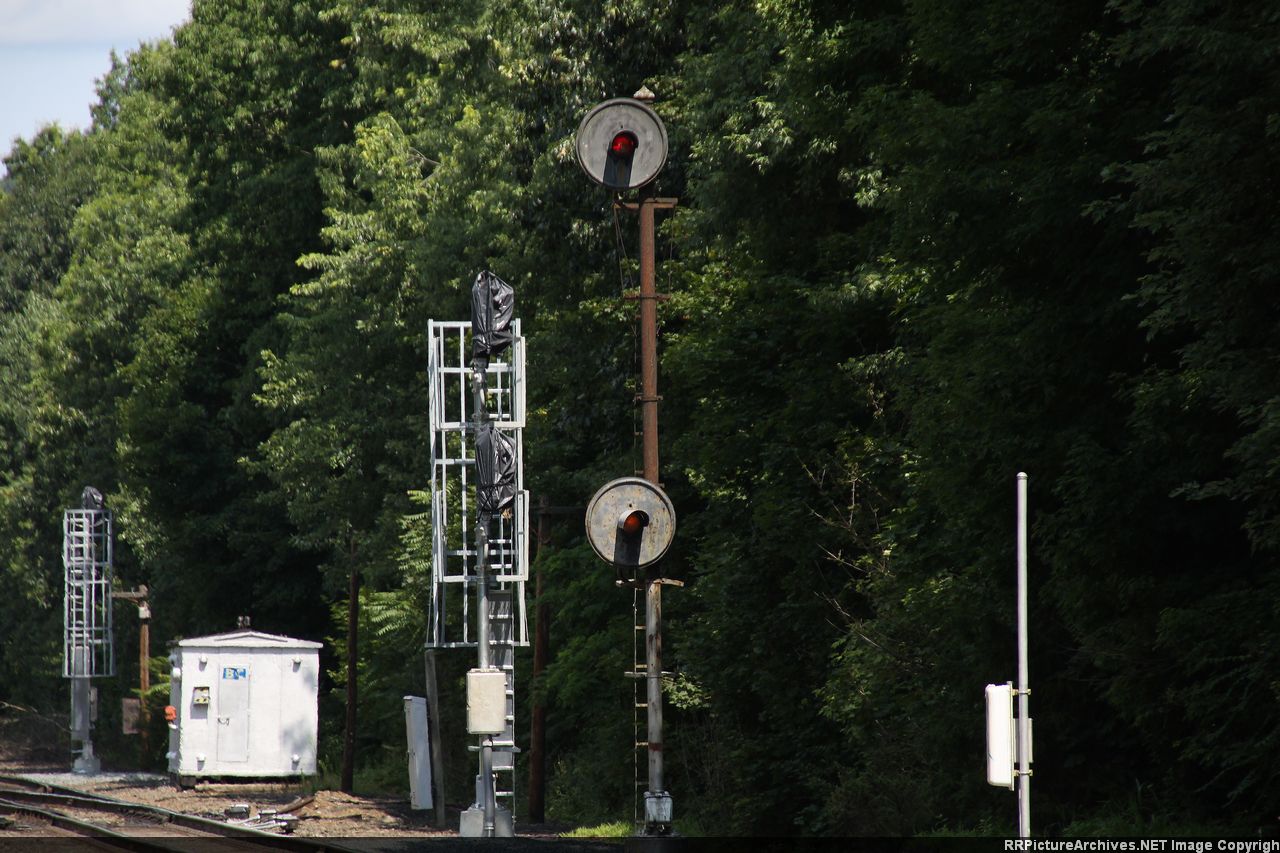
This is the oldest signaling still remaining on both the NJT and Metro North systems. It is a shame to see it go, but thanks to all sorts of factors it probably lasted a good 10 years beyond when it really should have been replaced.
While through the 1990's the Southern Tier saw significant traffic as Conrail's only doublestack cleared line out of the New York region, once other routes opened up traffic fell off dramatically with all through traffic ending at the beginning of the Norfolk Southern era. This left NS to maintain a line it really didn't want which is one of the conditions that leads to preserved signaling. Around 2005 NS finally sold the line to MNRR which promised to improve service on the line as a way to keep Rockland and Orange counties paying taxes to the MTA. Of course nothing came of these promises until about 2010 when $300 was allocated for track and signal improvements. Then Hurricane Sandy hit and caused numerous washouts which of course delayed the planned improvements even further.
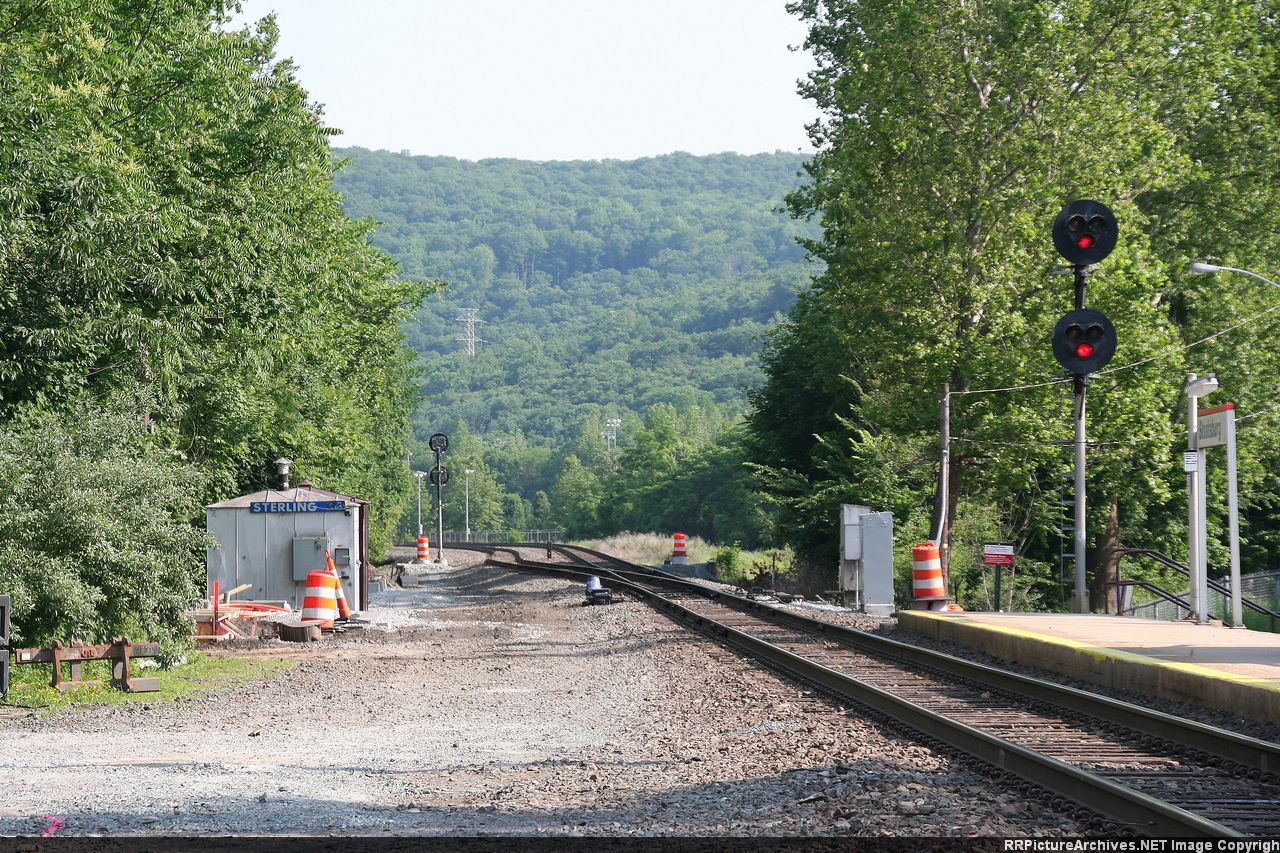 |
| Foundations for new signals and relay huts are going in at CP-STERLING in Sloatsburg, NY, which is the west end of Rule 251 ABS operation. |
Anyway, it is now 2014 and for good or for ill the long planned signaling improvements are finally being installed to replace the Erie/Conrail pole line based CTC and ABS signaling. I have heard that the pole line had become so problematic that it could often take 20 minutes or more for an NJT dispatcher to have his requested route actually display so it is no surprise that a big part of the upgrade was a fiber optic CTC line (which of course got washed out in many places by the Hurricane). NJT's current state of the art is NORAC standard Rule 562 operation (cab signals without wayside signals except at interlockings) and this is what they installed on the other partly "MNRR West of Hudson" Pascack Valley Line. However on the PVL MNRR is putting a bit more of its stamp on the hardware with non-darth traffic light signals instead of NJT's target type signals.
Here are some of the new signals, equipped with the 562 'C' boards behind the Erie/Conrail searchlights at CP-OV in Ottisville, NY where two tracks shrink down to 1 through the Ottisville Tunnel.
The project extends all the way to CP-BC in Port Jervis, NY where currently the single 261 track starting at CP-OV once again becomes two Rule 251 tracks.
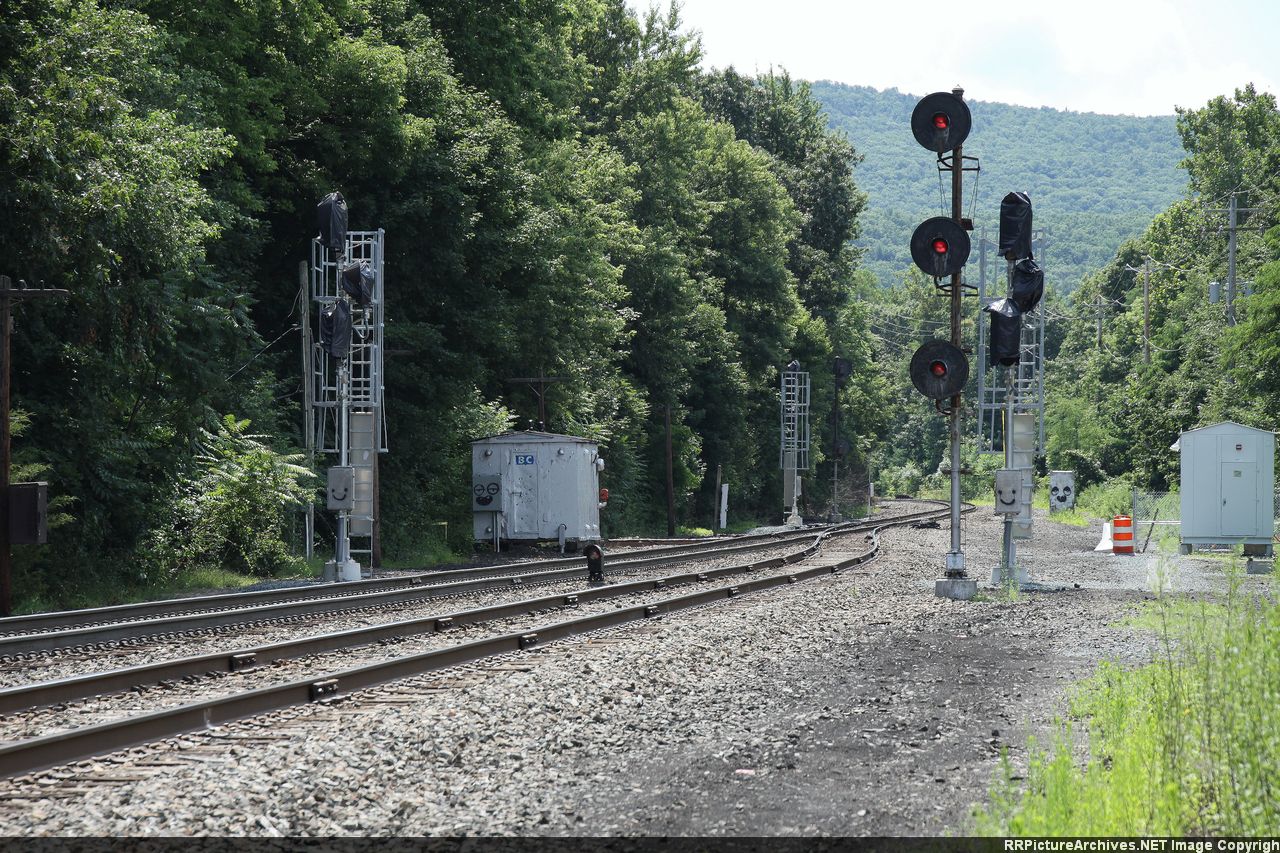 |

This is the oldest signaling still remaining on both the NJT and Metro North systems. It is a shame to see it go, but thanks to all sorts of factors it probably lasted a good 10 years beyond when it really should have been replaced.
Labels:
cab signals,
Conrail,
mnrr,
news,
NJT,
NS,
searchlight
Tuesday, August 12, 2014
When is an ABS Signal not an ABS Signal?
With railroad signaling I really do learn new things every day especially when I get off the beaten path and what's less beaten than the Kansas City Southern. Track circuits and the principles of automatic block signaling are well over 100 years old. With metal wheels on metal rails, running an electric current through the rails is an easy way to provide continuous train detection with side benefits such as detecting improperly lined switches and broken rails. ABS is railroad signaling at its most basic with red, yellow and green lights how could this concept ever be ambiguous?
At first glance this rather ungainly signal looks like a fairly typical North American bi-directional automatic signal, however the football shaped targets and cheap, small LED lamp units combined with a hand throw switch and station sign should make more signal fans instantly think of some sort of point detection/switch position signal. These non-interlocked and lightly regulated faux signals are used in non-signaled territory where remote controlled switches have been installed or a an extra measure of safety was desired for hand operated sidings or industrial tracks.
While you would be correct in that these signals are of that type they do not however serve that function.
This is in actuality a broken rail detection signal, which was kinda given away by the big BRD plate under the head. So instead of being connected to a set of points, as is seen in yards and other trackage without train detection, this signal is actually hooked into a track circuit and carries out all the functions typically ascribed to track circuits. In addition to broken rails I assume it might also detect open switches or even rolling stock within the block. The caption on the photo reads that flashing green is used for a "no defects" indication so avoid confusion with a genuine Clear signal, but the question remains why would anyone install such a monstrosity?
The answer is that Automatic Block Signals are a regulated railroad safety system and BRD signals are not, even if they basically do the same thing on a technical level. Despite being track circuited this main line track is still considered non-signaled, with track warrants providing the vital safety protections. BRD are frosting on the cake that provide assurance above and beyond what the FRA requires. I suspect that they do not need the same types of inspections or maintenance or even have to meet the same hardware standards. The equipment used for the BRD system probably cost a fraction of what a full on CTC signal would with non-vital relays and wiring and shit ass signal heads that don't need to meet visibility requirements etc. The advantages is that the trains get increased assurance that the line ahead is clear and the company does not need to worry about running long, heavy trains up to the 60mph limit for non-signaled track.
The KCS is actually upgrading the line to full on CTC and as you can see in the foreground all the budget faux signals are going to need to be replaced with the fully kosher kind. However do not think this is the end of BRD's. With the PTC regulations the FRA maintained a 60mph speed limit on all track that lacks broken rail detection. We might eventually see lines with fully wireless signaling and wayside BRD signals to allow speeds even in excess of 80mph.
At first glance this rather ungainly signal looks like a fairly typical North American bi-directional automatic signal, however the football shaped targets and cheap, small LED lamp units combined with a hand throw switch and station sign should make more signal fans instantly think of some sort of point detection/switch position signal. These non-interlocked and lightly regulated faux signals are used in non-signaled territory where remote controlled switches have been installed or a an extra measure of safety was desired for hand operated sidings or industrial tracks.
While you would be correct in that these signals are of that type they do not however serve that function.
This is in actuality a broken rail detection signal, which was kinda given away by the big BRD plate under the head. So instead of being connected to a set of points, as is seen in yards and other trackage without train detection, this signal is actually hooked into a track circuit and carries out all the functions typically ascribed to track circuits. In addition to broken rails I assume it might also detect open switches or even rolling stock within the block. The caption on the photo reads that flashing green is used for a "no defects" indication so avoid confusion with a genuine Clear signal, but the question remains why would anyone install such a monstrosity?
The answer is that Automatic Block Signals are a regulated railroad safety system and BRD signals are not, even if they basically do the same thing on a technical level. Despite being track circuited this main line track is still considered non-signaled, with track warrants providing the vital safety protections. BRD are frosting on the cake that provide assurance above and beyond what the FRA requires. I suspect that they do not need the same types of inspections or maintenance or even have to meet the same hardware standards. The equipment used for the BRD system probably cost a fraction of what a full on CTC signal would with non-vital relays and wiring and shit ass signal heads that don't need to meet visibility requirements etc. The advantages is that the trains get increased assurance that the line ahead is clear and the company does not need to worry about running long, heavy trains up to the 60mph limit for non-signaled track.
The KCS is actually upgrading the line to full on CTC and as you can see in the foreground all the budget faux signals are going to need to be replaced with the fully kosher kind. However do not think this is the end of BRD's. With the PTC regulations the FRA maintained a 60mph speed limit on all track that lacks broken rail detection. We might eventually see lines with fully wireless signaling and wayside BRD signals to allow speeds even in excess of 80mph.
Thursday, August 7, 2014
PHOTOS: WB Tower
CSX's WB (West Brunswick) tower in Brunswick, Maryland closed on December 9th, 2011 after a career spanning a full century of service on the B&O Main Line between Baltimore (or Washington) and Pittsburgh (or Wheeling). It also had the distinction of being the last manned interlocking tower on the B&O Main where scarcely more than 10 years before there had been 8. Fortunately I had several opportunities to personally visit WB tower between 2007 and 2010 as well as numerous others to pass by it on Amtrak's Capitol Limited, so I have enough material to devote an entire post to it in my ongoing series covering the B&O Main Line.
As far as I can tell WB was built sometime in the time around 1910 and while most evidence says indicated that it featured a power type interlocking machine from day one (note the compact square layout of the structure which would be ill suited to a mechanical frame) there is an opening in the concrete foundation that could have supported operation of mechanical pipelines. Over the years it had many paint jobs including the rather bland Chessie cream, however it eventually ended up in a nice CSX blue and grey scheme as seen here.
Remarkably the all wooden WB not only failed to catch fire it also retained its original tall style drop sash windows, a feature that most others of this age would have had boarded up and replaced with smaller modern windows. At some point in the first years of the 21st century WB was given a cosmetic refresh with brand new red siding and new, old style windows. In the age of rapid tower closures this was a remarkable development.
For most of its life WB was a US&S pneumatic interlocking plant with a 29-lever Model 14 type interlocking machine. At the time of its closure the tower had 9 levers for signals (2,4,6,8,16,24,26,28), 5 for switches (1,3,15,19,21) and 1 for an electrically locked switch (11). They are painted red, black and blue respectively. Here is a picture of the machine and the operator's desk shortly before the tower's closure in 2011. The machine is an older style Model 14 similar to the machine of similar vintage in ALTO tower which is another reason I suspect it is original.
To help you orient yourself here is a view of the model board. Technically WB controls the west end of Brunswick Yard which is located between two pairs of main tracks, 2 and 4 eastbound, 1 and 3 westbound. Technically tracks 3 and 4 function more as sidings and yard leads than main through tracks. On tracks 2 and 4 the interlocking consists of a pair of crossovers with signals on either side. On tracks 1 and 3 the interlocking is a trailing point ladder from three yard tracks. There is also a hand operated facing point crossover outside of interlocking limits. In WB's later life this ladder was mostly used by MARC commuter trains pulling out of the yard and into service.
In WB's last few years its premier signal was the 28R, which replaced an earlier structurally compromised CPL mast earlier that year. Here it is displaying a Clear indication for an approaching CSX freight train.
Also present in 2007 was the westbound train order hoop which got a lot of use prior to 2004 when the section west of HARPERS FERRY was operated under Rule 251. Orders would be placed in each of the two order fork mounts with the head end crew grabbing one set and the rear end crew the other.
As far as I can tell WB was built sometime in the time around 1910 and while most evidence says indicated that it featured a power type interlocking machine from day one (note the compact square layout of the structure which would be ill suited to a mechanical frame) there is an opening in the concrete foundation that could have supported operation of mechanical pipelines. Over the years it had many paint jobs including the rather bland Chessie cream, however it eventually ended up in a nice CSX blue and grey scheme as seen here.
For most of its life WB was a US&S pneumatic interlocking plant with a 29-lever Model 14 type interlocking machine. At the time of its closure the tower had 9 levers for signals (2,4,6,8,16,24,26,28), 5 for switches (1,3,15,19,21) and 1 for an electrically locked switch (11). They are painted red, black and blue respectively. Here is a picture of the machine and the operator's desk shortly before the tower's closure in 2011. The machine is an older style Model 14 similar to the machine of similar vintage in ALTO tower which is another reason I suspect it is original.
To help you orient yourself here is a view of the model board. Technically WB controls the west end of Brunswick Yard which is located between two pairs of main tracks, 2 and 4 eastbound, 1 and 3 westbound. Technically tracks 3 and 4 function more as sidings and yard leads than main through tracks. On tracks 2 and 4 the interlocking consists of a pair of crossovers with signals on either side. On tracks 1 and 3 the interlocking is a trailing point ladder from three yard tracks. There is also a hand operated facing point crossover outside of interlocking limits. In WB's later life this ladder was mostly used by MARC commuter trains pulling out of the yard and into service.
In WB's last few years its premier signal was the 28R, which replaced an earlier structurally compromised CPL mast earlier that year. Here it is displaying a Clear indication for an approaching CSX freight train.
Also present in 2007 was the westbound train order hoop which got a lot of use prior to 2004 when the section west of HARPERS FERRY was operated under Rule 251. Orders would be placed in each of the two order fork mounts with the head end crew grabbing one set and the rear end crew the other.
Subscribe to:
Posts (Atom)
